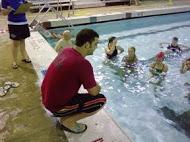
The major aim of the lifeguard first aid course is to offer training to prospective lifeguards to ensure they are equipped with knowledge and skills as they play their roles as lifeguards. To get ready for the training, it is important to be efficient in emergency swimming, cardiopulmonary resuscitation and treatment. There is more focus on swimming because the skills are the most difficult and important techniques that lifeguards must apply in their line of duty. The skills involved include rescue methods, CPR skill sets, standard and advanced first aid response and others.
Skills Learned in Lifeguard First Aid Courses
Lifeguards go through a drowning cycle that consists of elements that put the lives of people at danger of drowning. Some of the elements they need to protect people against include:
Incapacity to Adapt
In most cases, a common person has little knowledge on ocean and beach experience. As a result, a beach visitor has high chances of getting involved in marine dangers, for instance, rip currents and drowning. When faced with such danger a person without skills is likely to panic and fail to manage such an occurrence.
Lack of Education
Swimmers without enough skills are the most rescued in marine setting. In order to remain secure, beach visitors should be able to recognize threats in and around the sea or any other water body. The lifeguard first aid courses ensure that the lifeguards are able to eliminate any danger that may occur as a result of such situations.
Lack of Safety Advice and Absence of Supervision
Lifeguards play a crucial role in ensuring that members of the public are safe at all times. They provide advice of how to prevent drowning, how to identify threats and how to carry out recue when needed. Thus, they are trained on how to help the members of the public who lack the skills on how to come out of dangerous situations while swimming or on the beach.
The normal working day of a lifeguard must ensure that he or she eliminates the above elements that can lead to drowning. The lifeguards act as the first responders in most of the emergencies that occur in aquatic settings. This calls for a need for the lifeguard to be well equipped with techniques on how to handle such emergencies. They need to understand how to use different equipments to ensure they give the right medical assistance. The intensive lifeguard first aid courses help them be ready to handle any challenge they meet in their day to day duties.